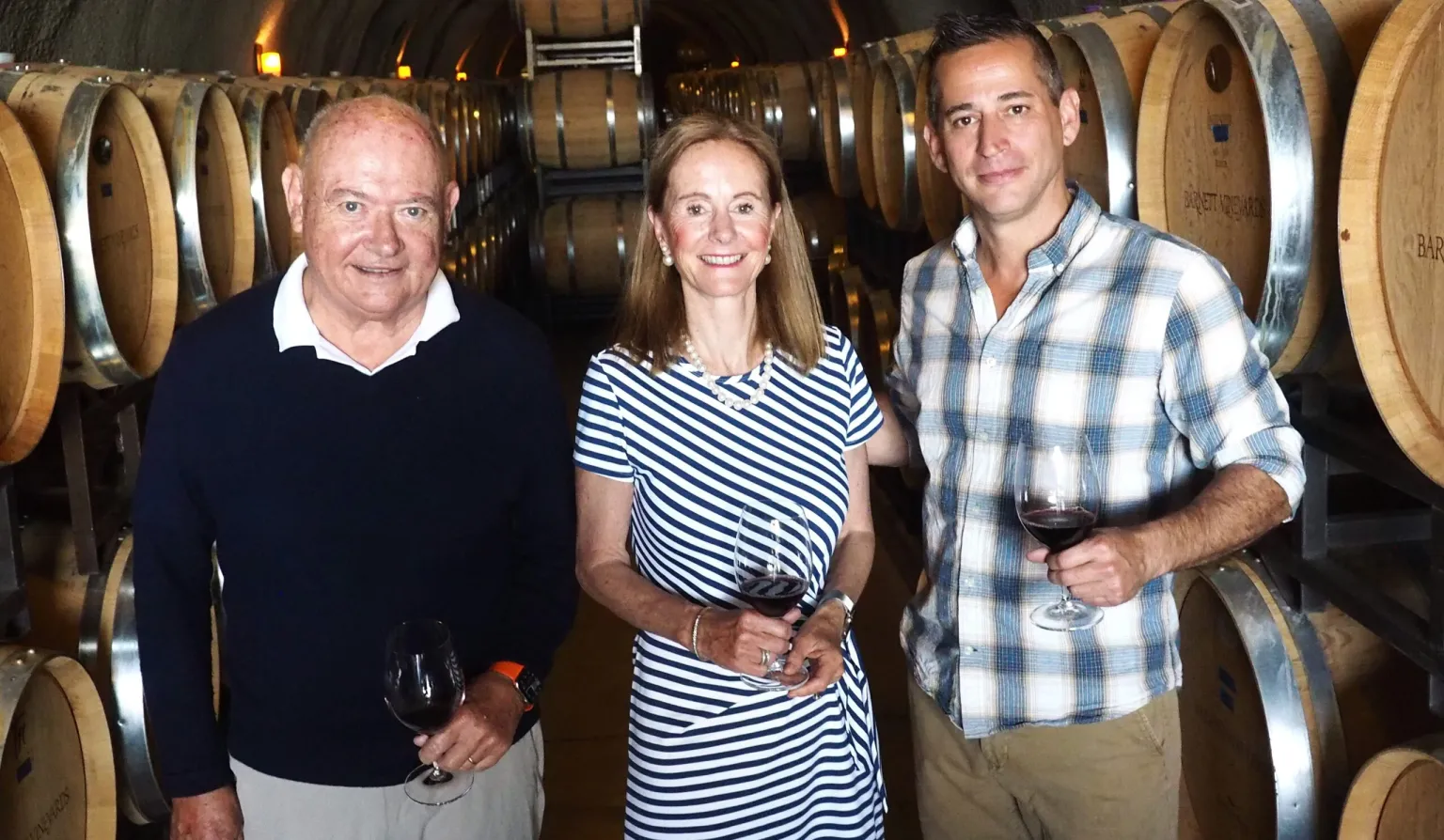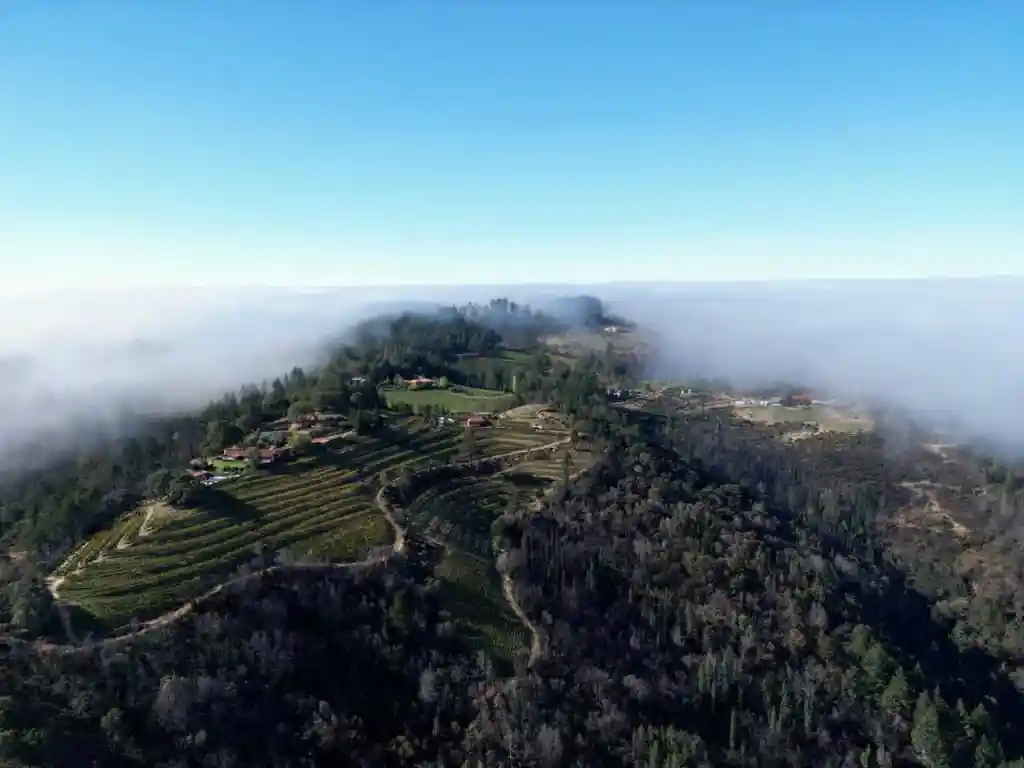Published by Signature Wines, written by by
We’re standing some 2000 feet up the sunrise slope of the Mayacamas Mountains.
We’re looking east but mostly down, way down, scanning the green blocks of grapevines that form the flat and orderly quilt of Napa Valley.
I ask Hal Barnett the whereabouts of the tree he climbed when he and his wife Fiona scouted these hills for a potential homesite in 1983. The stunning view of the valley he got from the tree is what persuaded the couple to invest in this steep, rocky, heavily timbered and viticulturally challenging landscape.
He gestures vaguely to the southeast.
“Long gone,” says Fiona.

Lots of trees are long gone from the slope between Barnett Vineyards and the valley floor. In 2020, the Glass Fire raged through the Barnett estate, consuming trees, an outlying storage shed, a soaring tasting platform, and about a fifth of the family’s 14 acres of wine grapes. There will be no Barnett Vineyards Cabernet Sauvignon from 2020; grapes that escaped flames didn’t escape smoke, which left the fruit worthless for wine.
David Tate, the winery’s winemaker since 2007, driven by curiosity, made a small batch of Cabernet Sauvignon with smoke-tainted fruit from the 2020 harvest, finding it “wretched,” with an emphasis on retch.
Flames surrounded the Barnett home, winery and the cave that houses row after row of French oak barrels holding one of Napa Valley’s more cherished Cabernet Sauvignons. They were all preserved through the efforts of family, friends, firefighters and employees. Many of their neighbors weren’t as fortunate. Before it was controlled the Glass Fire blackened 67,484 acres and consumed 1528 structures, several of them wineries.
Read the full article here: High Over Napa Valley, Barnett Vineyards Shines

